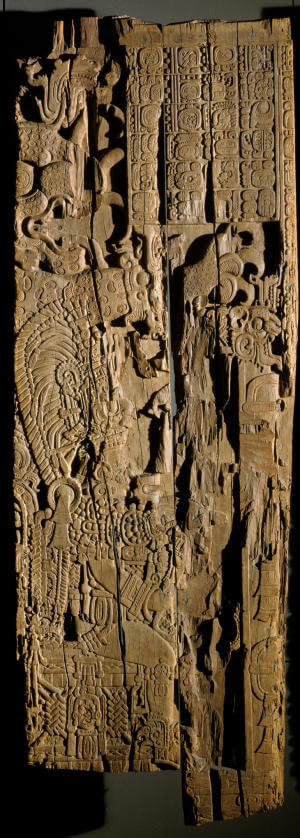The Maya are known for their complex calendar system, and now at least one of their calendars, the Long Term Calendar, has been empirically calibrated to the modern European calendar. This is according to an international group of scientists.

"The long-term board went out of use even before
that the Europeans conquered the Maya area," says Douglas Kent, professor of environmental archeology at Penn State University.
"Attempts to make adjustments between the long-term Mayan calendar and the modern European calendar have so far been made with the help of historical and astronomical events. But when looking at how climate change affected the rise and fall of the Mayans, I began to question how accurate these plates are when using these methods."
The researchers found that the new measurements reflect the main popular methods in use - the Goodman-Martinez-Thompson (GMT) correction, developed by Joseph Goodman in 1905 and modified by others after that. In the XNUMXs, scientists attempted the correction using the rudimentary methods of radiocarbon dating, but the large margin of error left the GMT's validity in doubt.
In an article published on April 11, 2013 in the journal Scientific Report, a combination of high-resolution mass spectrometry, used for carbon-14 dating, and additional calibration, showed that the current GMT calibration provides an accurate answer.
The Maya's long count starts from some theological point, and the date consists of five components: 144 thousand days - in Keton; 7,200 days – Caton; 360 days - a ton; 20 days - Vinal; And one day - Cain, when in the language of scientists each such unit is separated by a dot.
Archaeologists sought to place the dates of the Long Calendar on the European calendar that we use today to understand when events occurred in the Maya world compared to historical events elsewhere. The correlation also allowed them to compare the Mayan records with other sources of environmental, climatic and archaeological evidence and synchronize them using the European calendar.
The samples came from pieces of wood from the walls of a temple in the ancient Mayan city of Tikal in Guatemala, bearing a relief and dedication in the Mayan tablet. The wooden frame that was sampled, dates to the same time when two more such panels were dated in another study with carbon 14.
The researchers measured three growth rings of such trees using calcium that accumulates in the trees and its amount increases in rainy years. The rate of carbon 14 in the atmosphere is translated into the growth of the trees. The amount of carbon 14 in the atmosphere changes over time and during the classic period of the Mayan culture it went up and down.
The researchers took four samples from the lintel and used the varying annual concentration of calcium content as evidence of the tree's annual growth to determine the actual time interval by counting rings from the rainy seasons. The researchers used the information to fit four radiocarbon dates of the small fluctuations in the calibration curves. Matching these waves with carbon 14 dating provided a more accurate age to match the dates of the Mayan long-term calendar with the European calendars. These calibrations were even more complicated because there is a difference between the content of radioactive carbon between the northern and southern hemispheres.
"The complication arises from the fact that the concentration of radioactive carbon is different between the northern hemisphere and the southern hemisphere" says Kenneth. "The Maya region lies on the border, and the atmosphere there is a mixture of air concentrations in the north and south that change according to the seasons. We had to take that into account in our analysis.”
The results obtained by the researchers reflect the fact that the European GMT calibration indicates that the GMT was close to matching the Mayan Long Count with the European calendars.
"Event records at several Maya sites can now be synchronized more precisely with environmental, climatic and archaeological databases from this and nearby areas, and understand how climate change played an important role in the development and decline of this complex civilization," the researchers say.
http://www.sciencedaily.com/releases/2013/04/130411194926.htm

9 תגובות
Interesting, thank you.
So the date of the end of the world was accurate plus or minus, or is the end of the world expected to come again soon?
Thanx
If you can't see it - write to me at nissim.hadar@gmail.com And I'll send you a direct link to the article (I can't send directly from here
here:
http://www.sciencemag.org/content/110/2869/678.citation
jjj
Nice. Can you link to the first example?
Anonymous (unidentified) user
We definitely will. One example is the tomb of Pharaoh Djoser from 4600 years ago. We have historical records from which we can learn about the period of his reign and when he was buried in the pyramid.
A second - and very important - example is the holocaust dating by tree rings. Here we have consistent and accurate information, at the level of a year, up to 10000 years before now.
Have we ever done a carbon 14 calibration with events that have a historical record? It is interesting to check the level of reliability of the test with events whose dates we know for sure.